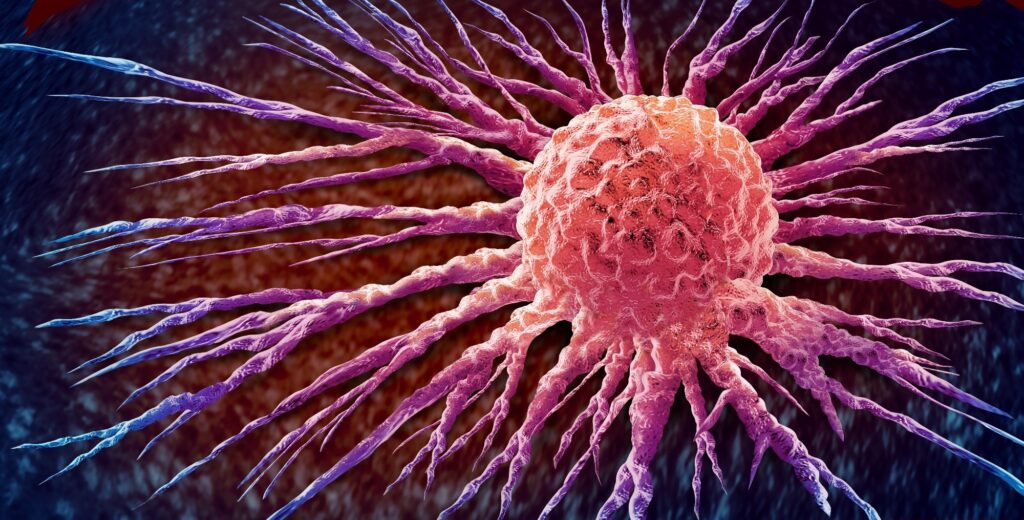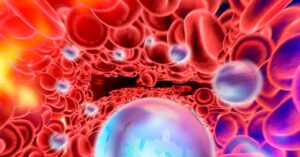
Scientists have discovered that the disruption of a single enzyme, SDR42E1, significantly alters vitamin D metabolism and cancer pathways, potentially paving the way for new cancer and metabolic therapies. This groundbreaking research, published in the journal Frontiers in Endocrinology, highlights the enzyme’s role in sterol metabolism and vitamin D regulation.
The study focuses on the short-chain dehydrogenase/reductase 42E member 1 (SDR42E1) enzyme, which plays a crucial role in vitamin D absorption and cancer pathogenesis. Vitamin D, a vital hormone for bone health, immune function, and phosphorus and calcium homeostasis, can be deficient due to impaired absorption and metabolism, despite sunlight exposure and dietary intake.
Unveiling the Role of SDR42E1
The research team employed a genome-wide association study to identify a nonsense variant, rs11542462, which produces a non-functional SDR42E1 enzyme. This variant is associated with elevated levels of 7-dehydrocholesterol (7-DHC) and 8-DHC, precursors in vitamin D synthesis. Although these sterols were previously identified as potential substrates for SDR42E1, the enzyme’s precise role in vitamin D metabolism was unclear until now.
In their study, researchers introduced an SDR42E1-containing plasmid into HCT116 cells, a human colorectal cancer cell line, to analyze its expression and distribution. Using CRISPR/Cas9 gene-editing technology, they created a homozygous SDR42E1 knock-in model to assess the enzyme’s functional role. RNA sequencing revealed 4,663 differentially expressed genes (DEGs) in the knock-in model compared to wild-type cells.
Pathway Analysis and Genetic Alterations
Approximately 56% of the DEGs were upregulated, including genes such as low-density lipoprotein receptor-related protein 1B (LRP1B) and ATP-binding cassette subfamily C member 2 (ABCC2). Meanwhile, 525 DEGs were downregulated, affecting genes like aldolase fructose-bisphosphate A (ALDOA) and Wnt family member 16 (WNT16).
Kyoto Encyclopedia of Genes and Genomes (KEGG) pathway analysis identified multiple activated pathways, including those related to vitamin digestion, immune disorders, and bile acid biosynthesis. Conversely, pathways linked to cellular senescence, DNA replication, and cancer transcriptional misregulation were deactivated.
“The study highlights SDR42E1 as a key modulator in vitamin D-related pathways, impacting regulators of vitamin D absorption, metabolic homeostasis, and cell proliferation,” the researchers noted.
Implications for Cancer and Metabolic Disorders
The study’s findings suggest that SDR42E1 disruption affects several oncogenic hallmarks, particularly those linked to colorectal cancer progression and chemotherapy response. Overexpression of SDR42E1 resulted in transcriptional changes consistent with apoptotic resistance and stress response, indicating its potential role in cancer therapy.
Further analysis revealed significant transcriptional deregulation in SDR42E1-overexpressing cells, with upregulated pathways related to immune response, cholesterol metabolism, and nuclear factor kappa B signaling. Notably, the overexpression model showed downregulation in pathways like antifolate resistance and DNA replication.
Future Research and Therapeutic Potential
The study suggests that SDR42E1 may have a broader role in modulating both genomic and non-genomic vitamin D signaling, warranting further investigation. The findings also underscore the need for additional studies to validate these results and explore the therapeutic and physiological relevance of SDR42E1.
“The potential for SDR42E1 to impact cancer therapy and metabolic disorders is significant, but more research is needed to fully understand its mechanisms and effects,” the authors concluded.
Limitations and Next Steps
Despite its promising findings, the study has limitations, including the use of HCT116 cells, which may not fully replicate the complexity of vitamin D functions. There is also the potential for off-target effects with CRISPR/Cas9 gene editing, and the cancerous origin of the cells may affect the generalizability of the findings.
Future research will need to address these limitations and further explore the role of SDR42E1 in different cell types and conditions. The potential for developing targeted therapies that modulate SDR42E1 activity could provide new avenues for treating cancer and metabolic disorders.
As the scientific community continues to unravel the complexities of vitamin D metabolism and its links to cancer, the insights from this study offer a promising step forward in understanding and potentially treating these conditions.







